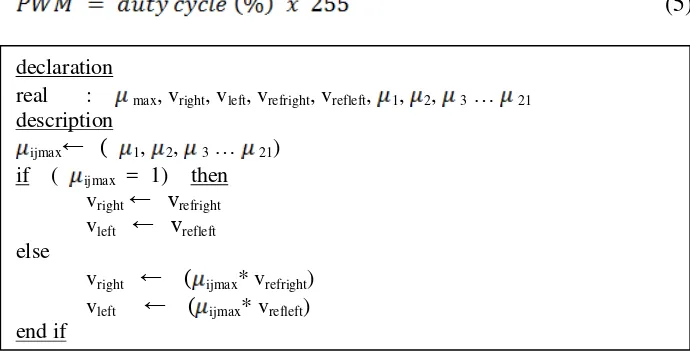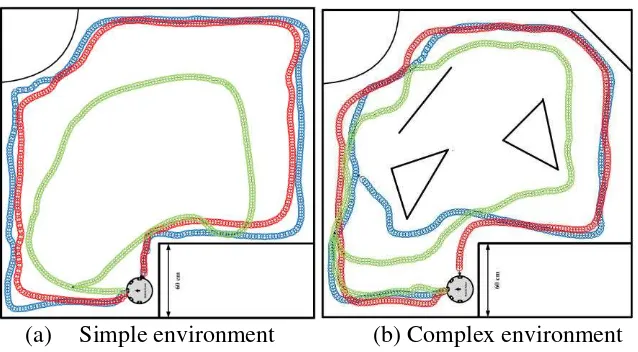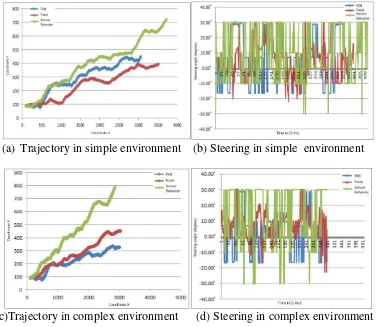47
Memory-based Reasoning Algorithm Based on Fuzzy-Kohonen
Self Organizing Map for Embedded Mobile Robot Navigation
Siti Nurmaini
Department of Computer Engineering, University of Sriwijaya
Jl. Raya Palembang-Prabumulih, Km 32, Inderalaya-Ogan Ilir, Indonesia
[email protected]
Abstract
Navigation in mobile robot not only avoid obstacles based on the sensor input but also comprehend the nature of its environment, remember over time such comprehended scenarios, recollect them and associate in time perceptions of environment that resemble each other. Such requirements demand spatial and temporal reasoning capabilities, for considering the mobile robot environmental as an experience of a sequence of sensor patterns. Memory-based reasoning must integrate into mobile robot control strategy to produces efficiently movement in unpredictable environment, to achieve robustly and to reduce computational cost. To implement this strategy Fuzzy-Kohonen Network (FKN) technique is utilized by employing small number of rules. The effectiveness of the proposed technique is demonstrated in series of practical test on our experimental mobile robot in structured and unstructured environment. A detailed comparison of the proposed
technique with other recent approaches in the specific case of ‘local minima’ detection
and obstacle avoidance is also presented. As results found that mobile robot based on FKN technique has the ability to perform navigation tasks in several environments, it has capability to recognize the environment, suitable for low cost mobile robot due to only produce small resources, provides much faster response to expected events and it allows the mobile robot move without any need to stop for ‘danger’ situation without suffering
from the ‘local minima’ problem.
Keywords: Embedded mobile robot, Fuzzy-Kohonen Network, navigation, unstructured environment, memory-based reasoning
1. Introduction
The two classical motivations of mobile robot navigation are exploration and automation. Therefore, mobile robot requires onboard sensors and processing capabilities in order to bring operability to unknown environment. In such environments it requires a number of heterogeneous capabilities are ability to reach target in real time to unexpected events, to determine the robot's position, and to adapt the environmental changing. Different robot architectures have been developed that level from purely reactive robots which do not keep an internal state to layered architectures with a deliberative layer planning on actions.
48
Perceiving the environment remains a fundamental task for autonomous mobile systems. In fact it is rather difficult to imagine a robot that is truly autonomous without being capable of acquiring a model of its environment. This model can be built by the robot exploring the environment and registering the data collected with the sensors over time. The visual sensors provide the richer source of useful information about the environmental surroundings. Nevertheless, it have drawbacks such as, slow in processing data, the global information like vision may not be obtained in a dark room and expensive in cost [1, 8].
In the real world, numerous natural agents like animals to recognize their environments just with low sensitive sensors without a geometric map [1], they learn for recognizing new environment by itself. Hence, it is essential to design a simple intelligent robot with low cost sensors, that have capability to recognize environment and adaptive in unknown environments. In the mobile robot navigation design, it is necessary to consider what accuracy is needed in each environmental situation. If the cost of sensing is considered, it may not be optimal in terms of the cost of reaching a target [12]. Moreover, the reactive navigation capabilities are indispensable since the real-world environments are appropriate to change over time [9-11]. It has difficulty handling a modification of the environment, due to some uncertain in each environmental situations.
It needs a method to overcome the uncertainty problem to realize a safe and efficient of mobile robot movement. It means the mobile robot does not collide with obstacles and it can reach a destination in a small amount of time. However, these requirements are usually in a trade-off relationship. If the mobile robot moves quickly to increase efficiency, this most probably decreases safety. If the mobile robot moves slowly to increase safety, efficiency decreases. There are numerous techniques that deal with the uncertainty, cost and efficiency requirements such as fuzzy logic [13, 14], heuristics [15], potential field [16, 17], neural network [18], immunological [4] and their hybrids [19-20]. However, in some cases during the mobile robot traversal cycling between multiple traps (local minima) problem may still occur. Several methods [9, 19, 21, 23] have been proposed, but the computationally is expensive and they cannot guarantee the mobile robot will not trapped [24].
The limitation of computational resources available to an embedded mobile robot often presents challenge. The high computational cost can decrease the embedded controller performance, due to it leads to a strong decrease cost performance in terms of memory and computational resource consumption to achieve speed processing [25]. If these constraints are imposed a priori, the advantages of controllers can be lost [26, 27, 28]. The choice of simple intelligent control algorithm is highly desirable to cope with the memory and time limitations. Intelligent control decisions are a natural consequence of possessing reasoning and cognition properties. It is an essential part of human navigation. Fuzzy-based algorithm comprising of only the two primary modules is unable to functionally replicate such reasoning as far as navigational aspects are concerned. By incorporating self-organizing maps or Kohonen network some of these drawbacks are alleviated. In this work, memory-based reasoning strategy utilizes combination of fuzzy logic and Kohonen network named FKN technique, to realize navigation control on low cost embedded mobile robot.
49
situation. The result founds that it reasonably good performance while navigating in such environments compare to fuzzy and sensor behavior technique.
2. Control Algorithm of Fuzzy-kohonen Self-organizing Map
In order to enable the mobile robot to avoid the obstacle in the navigational path with rapid reaction capacity, the better mapping relation between the sensor data input and the control output must be established. Since this mapping relation is extremely complex and nonlinear, it is very inconvenient to solve this problem using the general control method [29]. Furthermore, an intelligent mobile robot must be self-reliant to perform in complex, partly known and challenging environment using limited physical and computational resources [25], which leads to development of embedded controller.
The research in mobile robots navigation controller and embedded systems are two different areas, if the two areas are combined would produce a very challenging research. However, difficult challenge is to create an implementation that simultaneously optimizes numerous design metrics such as memory resources, power, computation, and sensors that are resident onboard the mobile robot [26]. However, soft computing techniques have the astonishing ability to deal with nonlinear problem and successfully integrated into an embedded controller design [30, 31, 21]. It provides effective techniques and improves the mobile robot navigation performance [32].
Fuzzy-Kohonen clustering network (FKCN) is one type of hybrid technique which is the result of integration between fuzzy logic and Kohonen’s self-organizing map network proposed by Huntsberger and Ajjimarangsee (1990). FKCN technique is certainly based on an unsupervised learning; nevertheless, this learning process produces high computational cost, requires intensive processing and needs large storage capacity [34]. In this work, to make this technique simplicity, the originality of unsupervised learning process reduces to supervised named, Fuzzy-Kohonen Network (FKN). In this strategy Kohonen network has the advantage of learning mechanism while the fuzzy logic plays a role in managing the input and output process of pattern recognition [34].
Figure 1. FKN Structure [33]
50
initial patterns reflect on weight vector Wj(1 ≤ j ≤ c) in hidden layer. The weight vector Wj and the number c of initial pattern are determined using Kohonen’s self-organizing map algorithm [33]. There are many initial patterns, which represent a characteristic pattern in every layer. To reduce the space complexity and to facilitate fast learning of sample sequences by the FKN, all these patterns are set as a weight in the distance layer and for calculating these weights, the rule base table is utilized instead of being trained. The number of rules equals that of initial patterns and every initial pattern is derived from previous experimental data base.
Figure 2. Navigation Control Procedure [34]
The pattern is assigned and associated with a pair of motor speed reference. This research different with works of Song and Sheen (2000) and Tsai et al (2010), due to in this research all process of the navigation control uses low cost 8 bits microcontroller and inexpensive infra-red sensor. Therefore, the algorithm must produce simple resources, for making the faster controller in the process and robust in the implementation. The algorithm navigation control procedure to determine the design purpose can be seen in Figure 2.
The stating point of control algorithm construction is a standard Kohonen-Layer [33]. It receives an n-dimensional input X = (z1,. . . , zn). Each of the m neurons in the Kohonen-layer processes an n-dimensional weight vector Wj. According to the “winner take-all” (WTA) principle, one neuron is selected as the “winner” pertaining to the current input. In the standard version the neuron c with thesmallest Euclidean distance between its weights vectors Wjand X. The method for learning rules to determine the distance and similarity between input pattern and initial pattern are described in the following steps:
51
distance input of the every infra-red sensor is divided into 4 grades using equation (1). Where Xi and si are the grade value and the distance measured from infra-red sensor, this values is divided into 4 grades.
X
i(1)
Step 2: Activate the Kohonen network by applying the input vector Xi and find the WTA neuron, the values which are most similar to the current input vector. For most application standard way of measuring this similarity is to compute Euclidian distance (dij). These values responsible for comparing the input pattern Xi with every initial pattern Wj in the hidden layer. When the input pattern Xi and the prototype pattern Wj are completely consistent, the output dij of j-th node is zero. The output of the hidden layer is expressed in the equation (2).
(2)
Step 3: The output value uij in output layer is determined based on dij, once the similarity value is obtained by using the Euclidean distance, then the degrees of membership µij is calculated. To obtain these values, linear function is used, as shown in Figure 3. There are three conditions of dij values, such as dij = 0, and .
Figure 3. Linear Function
Each kind of initial pattern Wj is corresponding to a fuzzy control rule, and each fuzzy control rule is corresponding to a speed vector. In this paper to simplify the algorithm, the max value f of Euclidian distance is obtained from experimental result due to the sensor reading by using Equation (3),
f
=
(3)
where : xminimum asminimum of weight sign, wmaksimum as maximum of weight sign, c = number of input .
To describe a linear function utilize Equation (2) and (3) as a membership degree μij. If the input pattern does not match any initial pattern, then the similarity value is represented by membership value μij from 0 to 1, by using Equation (4),
1
0
e
f
µ
ij(d
ij)
52
(4)
The membership degree μij represents the similarity between Xi and Wj , and μij∈ (0,1) and the sum of membership degree output ij equal to 1, the algorithm as shown in Figure 4.
Figure 4. Simple Algorithms to Obtain Similarity Value
3. Mobile Robot Navigation Platform
Mobile robot navigation must be reactive in the changing and in the unknown environment for achieving a goal. The most important property of a reactive control system is its fast reactions and it should be capable of reacting unexpected environment simultaneously. In this work, the experimental test illustrates the application of the proposed algorithm. Figure 5 shows a block diagram of embedded mobile robot platform and control system based on FKN technique, it responsible for generating motor steering and speed command in response to embedded controller. Operational data from infra-red sensors are processed in real-time by the on-board controller mounted on the mobile robot platform.
Figure 5. Block Diagram of Mobile Robot System
FKN Function: real declaration
integer : y[4], w1, w2, w3, w4 real : distance (s), ij, bound description
dij←
53
To perform several navigation tasks, mobile robot uses five infra-red low cost sensors are mounted in a circle on the mobile robot 45o apart to extract more information about surroundings. To reduce the space complexity and to facilitate fast learning of sample sequences by FKN is used that maps each sample us to a particular class. Initially the five
infra-red sensors are grouped into three groups namely left, center and right. Only one sensor s3 in group 1 is used to detect obstacles at the front of mobile robot. Two sensors s1, and s2, in group 2 are used to detect obstacle at left side and two sensor s4 and s5 in group 3 are used to detect obstacles right side of the mobile robot. The minimum reading of the sensors in each group is considered as the reading of that group.
The FKN classifies the readings of such groups into one of the 21 classes as shown in Table 1. To provide discrete samples for training, before sending into neural network, the sensor value quantization is performed. The formulas for three groups are;
where, Xi are the grade value and si are the minimum distance value from infra-red sensor of the ith group and s1, s2… si are threshold values for quantization. Evidently there can be other ways of classifying the range reading to classes. The reason to have specified the range readings in terms of far is 4, medium is 3, near is 2 and very near is 1. There are essentially due to the same kind of partitioning employed in the fuzzification part of the inference scheme for collision avoidance.
Table 1. Rule Base [34]
Rule
number If-part (Wi)
Then-part
54
In order to enable the mobile robot to avoid the obstacles with reactive action, the better mapping relation between the sensor data as input and the speed control as output must be established; due to the distribution of obstacle is complex. Since the obstacle exists in mobile robot direction and the width of obstacle is less than the measurement width of sensors, the mobile robot can recognize the environmental pattern. If the mobile robot detects an obstacle in the front, left, right or two sides, it can determine the navigation
path. However, the ‘danger’ condition like u-shape is always occurred, therefore special control scheme has to be given. The mobile robot will reduce the speed first and then turn to the right/left, when it detects simultaneously an obstacle in all direction.
1 2 3
Figure 6. Several Typical of Environments [34]
In this work infra-red sensors installed in mobile robot can be classified as 21 of environmental pattern categories as shown in Figure 6. All possibilities of mobile robot environmental are considered through fuzzifying process and combining these 21 classes of rule base in Table 1. The rule table is constructed exploiting the sequence of environmental pattern and speed levels. In this strategy 21 rules are employed to kept few compare to conventional fuzzy control technique. Our mobile robot is equipped with two wheels on both side and one free wheel at the front of mobile robot. The two parallel wheels are driven by direct current (dc) motors. Its sequence is determined by the relative references speeds of the left and right wheels. Therefore, each initial pattern is associated with a couple of reference speeds. In this work mobile robot target is assigned to kept simplicity.
In mobile robot navigation, speed control analysis gives information about and mobile
robot’s left and right speed over the time. By using FKN technique, after the rule base and
55
multiplied by level similarity with the speed references (vref). The simple algorithm for generating DC motor speed can be seen in Figure 7. The results of mobile robot speed than conversion to pulse width modulation (PWM) data, namely the duty cycle. Duty cycle is determined within a few percentage points, to obtain some value. By regulating the duty cycle of PWM, the speed of DC motor and steering angle are obtained for controlling mobile robot movements. The formula of PWM as follows,
(5)
Figure 7. Simple Algorithms to Control Motor Speed
4. Experimental Results and Discussion
In order to evaluate the performance of the proposed autonomous exploration strategy, several experiments are conducted employing a self-constructed embedded mobile robot. The effectiveness, robustness and comparison of various systems are done using single stage fuzzy behavior, sensor behavior and our proposed simple FKN technique. Experimental is set-up on real embedded mobile robot. Low cost microcontroller 8 bits Alf and Vegard's Risc processor (AVR) 8535 with 8 Kbytes flash memory is designed for central navigation as onboard controller. The specified traveling nominal speed in these experiments is 20 cm/s. The mobile robot has maximum speed of vmax = 90% of duty cycle
of PWM. The data from experimental result is obtained by using embedded bluetooth strategy in a real time. For evaluating our proposed technique, experiments are implemented including structured, unstructured environment and unstructured obstacle as
‘danger situation’.
4.1 Structured Environment
This section, the experiments in complex environment is conducted utilize twenty one environmental patterns, for investigating the influence of FKN technique in terms of steering, speed and movement performance. The input data from sensor is created from the sensing of a structured environment. After learning process, the training data are given to the FKN as initial data. In this experiment, we dealt with more noise like unstructured obstacles, as depicted in Figure 8 (a) and (b). As stated earlier, mobile robot performance based on FKN is compared to other technique are fuzzy behavior in red line and sensor behavior in green line.
declaration
real : max, vright, vleft, vrefright, vrefleft, 1, 2, 3… 21
description
ijmax← ( 1, 2, 3… 21)
if ( ijmax = 1) then
vright← vrefright
vleft ← vrefleft
else
vright ← ( ijmax* vrefright)
vleft ← ( ijmax* vrefleft)
56
(a)
Simple environment
(b) Complex environment
Figure 8. Mobile Robot Movement on Structured Environment
In order to verify the effectiveness of the proposed technique, mobile robot is set up in several environments. It can be seen in Figure 8 (a), all technique that use in mobile robot successfully to perform navigation tasks. However, mobile robot based on FKN is able to recognize the environment and produce smooth movement; due to it has demand spatial and temporal reasoning capabilities in memory of mobile robot. Fuzzy logic has the ability to follow the wall behavior and it has smooth movement too. In contrast to mobile robot based sensor behavior, it does not smooth in movement, due to it runs only based the sensor perception. The decision for the proper turn angle of the mobile robot is taken based on sensory information and the angular difference between the mobile robot’s current direction of motion and the goal orientation with respect to origin of the reference frame.
Figure 8(b) shows the mobile robot in complex environment, by applying the off-line data and supervised training method to this network, the pattern mapping relation between sensory input and velocity command is established. Proposed technique indicates that efficiently realize the mobile robot navigation. In fuzzy behavior technique, mobile robot starts wall-following behavior at the same position for the same environment. However, the largest length of mobile robot path from the wall is obtained compare to FKN technique. Different with sensor behavior performance, the mobile robot moves only keep the distance from the wall.
In Figure 9, presents the experimental result of the mobile robot performance in structured environment, indicating the effectiveness and applicability of the proposed technique. The same fact is observed from the outputs of various experiments performed in different environmental conditions. The results highlight the fact that by adding the Kohonen self-organizing map stage enhances environmental sensing capacity of the mobile robot system. Figure 9(a) and 9(c) shows the mobile robot trajectory in two environments such as simple and complex environment, the mobile robot will not move into the concave region and move successfully to the target.
57
be seen in Figure 9 (b) and (d). Steering angle is the difference between target and mobile robot heading and provides information about current mobile robot orientation.
(a)
Trajectory in simple environment (b) Steering in simple environment
(c)Trajectory in complex environment (d) Steering in complex environment
Figure 9. Mobile Robot Performance in Structured Environment
4.2 Unstructured Environment
The second experiment is performed in unstructured environment. An unstructured environment is a type of environment that has no specific pattern. Traps can be created by a variety of obstacle configurations. A well-known drawback in unstructured environment is that the mobile robot suffers from ‘danger’ problems in that it uses only locally available environmental information without any previous memorization. The key issue to
that problem is the detection of the ‘danger’ situation during the mobile robot’s traversal.
58
instance the mobile robot actually does not detect a ‘danger situation’ by correlating similar experiences.
In contrast to mobile robot based on FKN technique can recognize the entire environmental situation and can reach the finish without trapped in the concave and convex environment. The same with experiment 2 as shown in Figure 10 (b), these results suggest that in the case of unstructured environment FKN technique are preferred. This is due to of the fact the fuzzy logic output in the unexplored regions of inputs is not predictable and error at each stage gets accumulated and hence do not give stable movements. However, in ‘danger situation’, FKN technique by considering memory-based reasoning brings the mobile robot out of the trap.
(a)
Experiment 1
(b) Experiment
2Figure 10. Mobile Robot Movements in Unstructured Environment
Figure 11 presents the mobile robot experimental result in unstructured environment with several acute angles. The trajectory in first environment is illustrated in Figure 11 (a). By using fuzzy logic and sensor behavior technique, mobile robot stop in concave situation and cannot continue move. In contrast to mobile robot based on FKN technique success traveling to the target because it has the ability to recognize the environment. It allows continuous, fast motion of the mobile robot without any need to stop for ‘danger
situation’. From Figure 11 (b) shows that the recorded of mobile robot steering angle performance based on FKN, fuzzy logic and sensor behavior technique respectively. The steering angle can be used to check the maneuvering of the mobile robot as it encounters obstacles. The results reveal that the proposed technique is capable of smoothly steering the mobile robot over this unstructured environment.
59
(a) Trajectory (b) Steering angle
(c) Speed for left motor (d) Speed for right motor
Figure 11. Mobile Robot Performance in Unstructured Environment 1
Figure 12 demonstrates the other possible trajectories when the environment is changed due to there are some acute angles (concave and convex corner) in the environment. In Figure 12(a)–(d) the mobile robot performance is recorded such as trajectory, speed and steering angle respectively. Notably, mobile robot based on FKN algorithm has the ability
to explore the environment safely in this long journey without collision and ‘dead lock’ in
danger situation. In contrast to the mobile robot-based fuzzy logic system and sensor behavior, it cannot continue move due to the ‘danger’ situation in the environment. The mobile robot based on FKN technique to respond promptly to its surroundings, for instance, to avoid unexpected obstacles and continue traveling toward the target.
60
(c) Speed for left motor (d) Speed for right motor
Figure 12. Mobile Robot Performance in Unstructured Environment 2
4.3 Local Minima Situation
The basic objective of this experiment is to enable the mobile robot to autonomously identify all environmental situation (that is to identify each corner) in real-time while exploring this completely unknown environment using 21environmental pattern, starting with no prior knowledge about environmental shape, specifics, corner description, any or any global coordinates. The navigation strategy is based on the recognizing of local sensed environment, thus the FKN actively selects a movement direction from sets of possible direction in a rule base table. Once initial pattern in the rule table have been established the FKN network will produce desired robot heading for escape the trap.
Numerous experiments are conducted to demonstrate the performance of mobile robot navigation employing FKN technique to various complex unstructured environments, in particular, the capability of escaping from the traps or the wandering situations described. Several researchers have proposed the control strategy to overcome the problem by designing several control strategy (Luh and Liu, 2006; Zhu and Yang, 2007), however, the
‘local minima’ may still happen. For example, a mobile robot wanders in definitely in a
loop inside a U-shaped obstacle, because it does not has memory about the initial pattern of the environment, and its navigation is only based on the local sensed environment. In this paper, using the information acquired from the sensor array, the memorizing control strategy in tends to find a safe way to circumvent any collision to guide the mobile robot out of the traps.
(a)
U-Shape
(b) Complex case
Figure 13. Mobile Robot in Complicated Situation without Suffering from the
61
Figure 13 (a) and (b) show the mobile robot in local minima situation, due to a long wall with U-shaped area is located in the complex environment. When the obstacles are long and goal repulsing fuzzy behavior conflict and the mobile robot gets itself into an infinite loop as shown in Figure 13(a). This continues ad infinitum and is termed the local minima problem. By using mobile robot memory based on FKN, a possible means by which the mobile robot can come out of this loop is to recognize its repeated traversal in the same environment and execute a sequence of steps that pulls it out of the trap. The fuzzy inferencing method has been shown to be successful in real-time navigation with cluttered environments. But when the environment is filled with obstacles in the form of loops, concave corner, convex corner, and other complicated structures the mobile robot tends to lose track of direction and gets trapped.
It can be seen from Figure 13 (b) that the mobile robot meets infinite loops, which are a loop inside U-shaped obstacle, without suffering from the ‘local minima problems. To come out of the loop the robot must comprehend its repeated traversal through the same environment, which involves memorizing the environment already seen. In the experiment, memory-based reasoning strategy is developed for the system in navigation chips. The mobile robot change the strategy if the distance between the mobile robot and obstacle in current situation same as the distance in navigation memory for solving local minima.
5. Conclusion and Future Work
This paper presents memory-based reasoning algorithm for embedded mobile robot, through the combination of heuristic fuzzy rules and the Kohonen self-organizing map network. This technique also builds up pattern mapping relation between sensors input and velocity command by applying the off-line and supervised training method to this network. The proposed FKN techniques are simple to construct, and do not necessitate a significant amount of storage, making them a sufficient choice for an embedded mobile robot with an adequate processor and small fixed storage. The results show that, the mobile robot has the ability to memorize and recognize the structured and unstructured environment and produce satisfactory performance. Furthermore, proposed simple FKN technique is adaptive to the environmental changing and can overcome the sensor noisy compare to fuzzy logic and sensor behavior technique. FKN structure has been proven to be effective in reducing the number of the fuzzy rules so that the simple navigation strategy has been proposed to steer the mobile to reach the target. The proposed technique is presented in this work is promising and is able to predict the mobile robot in unstructured environment, to make the collision avoidance system more robust or flexible and it has capability to escape from U-shaped situation.
62
Acknowledgements
Author thanks to Higher Education General Director (DIKTI) Nation Education Department, Indonesia for their financial support in Competitive Grants Project.
References
[1] S. Yamada, “Recognizing environments from action sequences using self-organizing maps”, Applied
Soft Computing, vol. 4, (2004), pp. 35–47.
[2] T. Schmitt, R. Hanek, M. Beetz, S. Buck and B. Radig, “Cooperative probabilistic state estimation for
vision-based autonomous mobile robots”, IEEE Transc. on Robotic and Automation, vol. 18, no. 5,
(2002), pp. 670-684.
[3] A. C. Meyer and D. Filliat, “Map-based navigation in mobile robots: A review of map-learning and
path-planning strategies”, Cognitive System Research, vol. 4, no. 4, (2003), pp. 283-317.
[4] C. G. Luh and W. W. Liu, “An immunological approach to mobile robot navigation”, Motion Planning,
In-Tech Open, (2008), pp. 291-318.
[5] M. Asada, “Map building for a mobile robot from sensory data”, IEEE Trans. Syst. Man Cybernet, vol.
20, no. 6, (1990), pp. 1326–1336.
[6] A. Elfes, “Sonar-based real-world mapping and navigation”, Int. J. Robot. Autom., vol. 3, no. 3, (1987),
pp. 249–265.
[7] M. Fichtner and A. Grobmann, “A probabilistic visual sensor model for mobile robot localization in
structured environment”, IEEE international conference on Intelligent Robots and System, (2004) Sendai
Japan, pp. 1890-1895.
[8] G. N. Marichal, A. Hernandez, L. Acosta and J. E. Gonzalez, “A Neuro-fuzzy system for extracting
environment features based on ultrasonic sensors”, Sensors, vol. 9, (2009), pp. 10023-10043.
[9] A. Saffiotti, “The uses of fuzzy logic in autonomous robot navigation”, Journal Soft Computing, vol. 1,
no. 4, (1997), pp. 180–197.
[10]S. X. Yang and M. Meng, “An efficient neural network method for real-time motion planning with safety
consideration”, Robot. Auton. System, vol. 32, (2000), pp. 115–128.
[11]A. Bonarini, G. Invernizzi, H. Labella and M. Matteucci, “An architecture to coordinate fuzzy behaviors
to control an autonomous robot”, Fuzzy Sets and Systems, vol. 134, no. 1, (2003), pp.101-115.
[12]J. Miura, Y. Negishi and Y. Shirai, “Adaptive robot speed control by considering map and motion
uncertainty”, Robotics and Autonomous Systems, vol. 54, (2006), pp. 110–117.
[13]E. Tunstel, M. Oliveira and S. Berman, “Fuzzy behavior hierarchies for multi Robot control”,
International Journal of Intelligent Systems, vol. 7, (2002), pp. 449-470.
[14]H. Hagras, “A hierarchical type-2 fuzzy logic control architecture for autonomous mobile robots”, IEEE
Transc. on System Man and Cybernetic, (2004).
[15]K. T. Song and L. H. Sheen, “Heuristic fuzzy-neuro network and its application to reactive navigation of
a mobile robot”, Fuzzy Sets and Systems, vol. 110, no. 3, (2000), pp. 331–340.
[16]K. Sekiguchi, M. Deng and A. Inoue, “Obstacle avoidance and two wheeled mobile robot control using
potential function”, Proc IEEE Int Conf Ind Technology, (2006), pp. 2314–2319.
[17]Y. Huang, D. Sun and Q. Qin, “Path planning of mobile robot based on particle swarm optimization
algorithm”, Ordnance Industry Automation, vol. 25, no. 4, (2006), pp. 49-61.
[18]B. N. Hui and K. D. Pratihar, “Neural network-based approaches vs potential field approach for solving
navigation problems of a car-like robot”, International Journal on Machine Intelligence and Robotic
Control, vol. 6, no. 2, (2004), pp. 39–60.
[19]E. Aguirre and A. Gonzalez, “A Fuzzy perceptual model for ultrasound sensors applied to intelligent
navigation of mobile robots”, Applied Intelligence, vol. 19, (2003), pp. 171–187.
[20]J. M. Er and Y. Zhou, “A novel framework for automatic generation of fuzzy neural networks”,
Neurocomputing, vol. 71, (2008), pp. 584–591.
[21]S. X. Yang, H. Li, Q. H. Meng and X. P. Liu, “An embedded fuzzy controller for a behavior-based
mobile robot with guaranteed performance”, IEEE Transactions on Fuzzy Systems, vol. 12, no. 4, (2004)
August, pp. 436-446.
[22]P. Vadakkepat, O. C. Miin, X. Peng and T. H. Lee, “Fuzzy behavior-based control of mobile robots”,
IEEE Transactions on Fuzzy Systems, vol. 12, no. 4, (2007), pp. 559–564.
[23]M. Deng, A. Inoue, K. Sekiguchi and L. Jiang, “Two-wheeled mobile robot motion control in dynamic
environments”, Robotics and Computer-Integrated Manufacturing, vol. 26, (2010), pp. 268–272.
[24]A. Zhu and X. S. Yang, “Neurofuzzy-based approach to mobile robot navigation in unknown
environments”, IEEE Transaction on Systems, Man and Cybernetics –Part C: Applications and Reviews,
63
[25]I. Baturone, J. F. Moreno-Velo, V. Blanco and J. Ferruz, “Design of embedded DSP-based fuzzy
controllers for autonomous mobile robots”, IEEE Transaction on Industrial Electronic, vol. 55, no. 2,
(2008), pp. 928-936.
[26]E. Tunstel, A. Asgharzadeh and M. Jamshidi, “Towards embedded fuzzy control of mobile robots”,
Proceedings of the International Conference on Fuzzy Logic, Neural Nets and Soft Computing, (1994),
Fukuoka, Japan, pp. 521-577.
[27]V. C. Altrock, “Adapting existing Hardware for Fuzzy Computation”, Handbook of Fuzzy Computation,
Institute of Physics Publishing, (1998).
[28]S. Nurmaini, P. P. Aditya and Rendyansah, “Development Mobile Robot Control Architecture with
Integrated Planning and Control on Low Cost Microcontroller”, Journal of Theoretical and Applied
Information Technology, vol. 35, no. 1, (2012), pp. 100-111.
[29]B. N. Hui and K. D. Pratihar, “A comparative study on some navigation schemes of a real robot tackling
moving obstacles”, Robotics and Computer Integrated Manufacturing, vol. 25, (2009), pp. 810-828.
[30]E. D. V. Simoes, “An embedded evolutionary controller to navigate a population of autonomous robots”,
Frontiers in Evolutionary Robotics, edited by: Hitoshi Iba, (2008), pp. 439-464.
[31]H. Hagras, V. Callaghan and M. Colley, “Online learning of the sensors fuzzy membership functions in
autonomous mobile robots”, Proc. of IEEE Int. Conf. Robot. Autom., San Francisco, CA, vol. 4, (2000),
pp. 3233–3238.
[32]F. Hoffmann, “Soft computing techniques for the design of mobile robot behaviors”, Information
Science, vol. 122, (2000), pp. 241-258.
[33]T. L. Huntsberger and P. Ajjimarangsee, “Parallel self-organizing feature maps for unsupervised pattern
recognition”, Int. Journal General Systems, vol. 16, no. 4, (1990), pp. 357-372.
[34]S. Nurmaini, “Intelligent Low Cost Mobile Robot and Environmental Classification”, European Journal
of Scientific Research, vol. 35, no. 12, (2011), pp. 1-7.
[35]C. C. Tsai, C. C. Chen, K. C. Chan and Y. Y. Li, “Behavior-based navigation using fuzzy kohonen
clustering network for mobile service robot”, International Journal of Fuzzy Systems, vol. 12, no. 1,
(2010), pp. 25-32.
Authors
Dr. Siti Nurmaini was born in Palembang, August 2, 1969.
![Figure 1. FKN Structure [33]](https://thumb-ap.123doks.com/thumbv2/123dok/2862860.1694596/3.612.199.418.437.657/figure-fkn-structure.webp)
![Figure 2. Navigation Control Procedure [34]](https://thumb-ap.123doks.com/thumbv2/123dok/2862860.1694596/4.612.221.395.182.460/figure-navigation-control-procedure.webp)
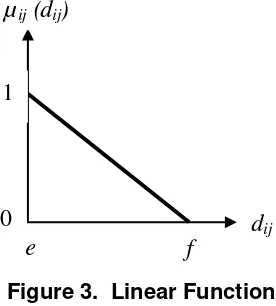
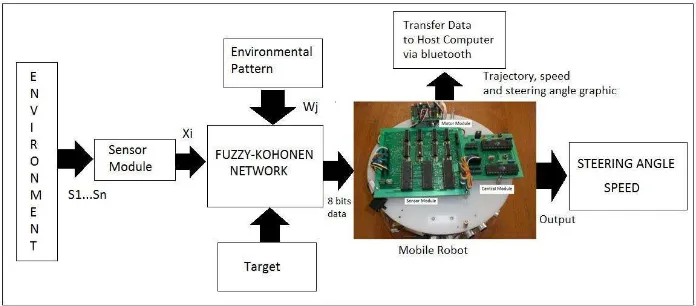
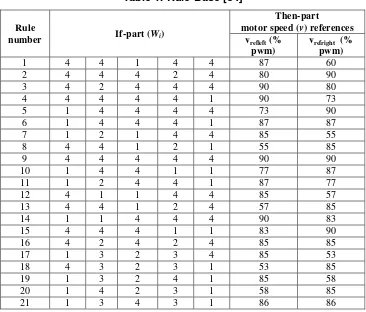
![Figure 6. Several Typical of Environments [34]](https://thumb-ap.123doks.com/thumbv2/123dok/2862860.1694596/8.612.136.484.189.486/figure-several-typical-of-environments.webp)
